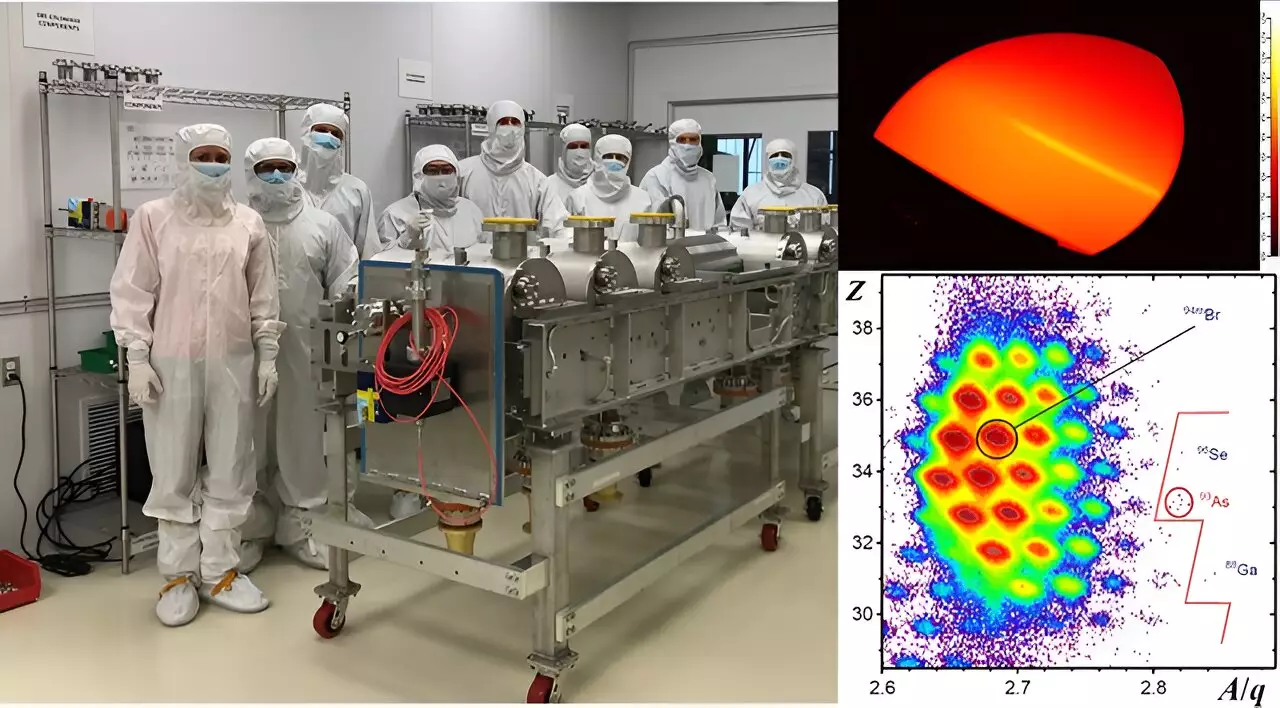The Facility for Rare Isotope Beams (FRIB) has recently set a remarkable benchmark in the realm of nuclear science. Researchers successfully accelerated uranium ions to unprecedented levels, delivering a continuous beam power of 10.4 kilowatts, a milestone that holds significant implications for isotope research. The details of this groundbreaking work are elaborated in the journal Physical Review Accelerators and Beams. Given that uranium poses notable challenges in acceleration, the development of such a potent beam represents a leap forward in scientific exploration.
Uranium plays a crucial role in the production of rare isotopes, which are invaluable for various scientific programs. According to the National Academy of Sciences and the Nuclear Science Advisory Committee, over half of the top-priority programs in isotope research depend on a uranium primary beam. Its ability to yield a diverse range of isotopes through processes like fission and fragmentation makes it a particularly appealing choice for scientists. By establishing the successful acceleration of uranium at higher power, FRIB has not only achieved a high-energy milestone but also broadened the horizons for future isotope research.
Within a remarkably brief period—just eight hours—scientists at FRIB utilized the newly accelerated uranium beam to produce and identify three previously unrecognized isotopes: gallium-88, arsenic-93, and selenium-96. This swift accomplishment underlines the beam’s significant potential for advancing research. The enhanced power of the uranium beam facilitated the operation of various accelerator devices, which were meticulously fine-tuned to achieve optimal performance under high gradients. As a result, FRIB has laid the groundwork for investigating heavier ion beams and delving deeper into uncharted territories of the nuclear landscape.
Technological Innovations Driving Progress
The record-breaking performance of the uranium beam was made possible through innovative advancements at FRIB. The facility’s sophisticated superconducting linear accelerator, featuring 324 resonators within 46 cryomodules, played a pivotal role. Moreover, the strategic implementation of a liquid-lithium stripper and cutting-edge technologies in uranium production, including Electron Cyclotron Resonance (ECR) ion sources and a specialized heavy-ion Radio-Frequency Quadrupole (RFQ), contributed to the remarkable achievements. Researchers also devised new methodologies to enable the simultaneous acceleration of uranium’s three charge states, a feat that significantly bolstered the output power.
Collaboration and Global Implications
The success at FRIB underscores the importance of collaboration in scientific research. The work involved contributions from esteemed scientists across multiple nations, including the United States, Japan, and South Korea. This international partnership reinforces the notion that groundbreaking advancements are often the result of collective effort and shared expertise. As the scientific community continues to explore the implications of this milestone, researchers are poised to unlock further mysteries surrounding nuclear reactions and the properties of rare isotopes.
The recent advancements at FRIB in uranium beam acceleration mark a pivotal moment in nuclear research. As technology progresses and collaborative efforts expand, the potential for significant discoveries in isotopes and nuclear physics continues to grow.


Leave a Reply